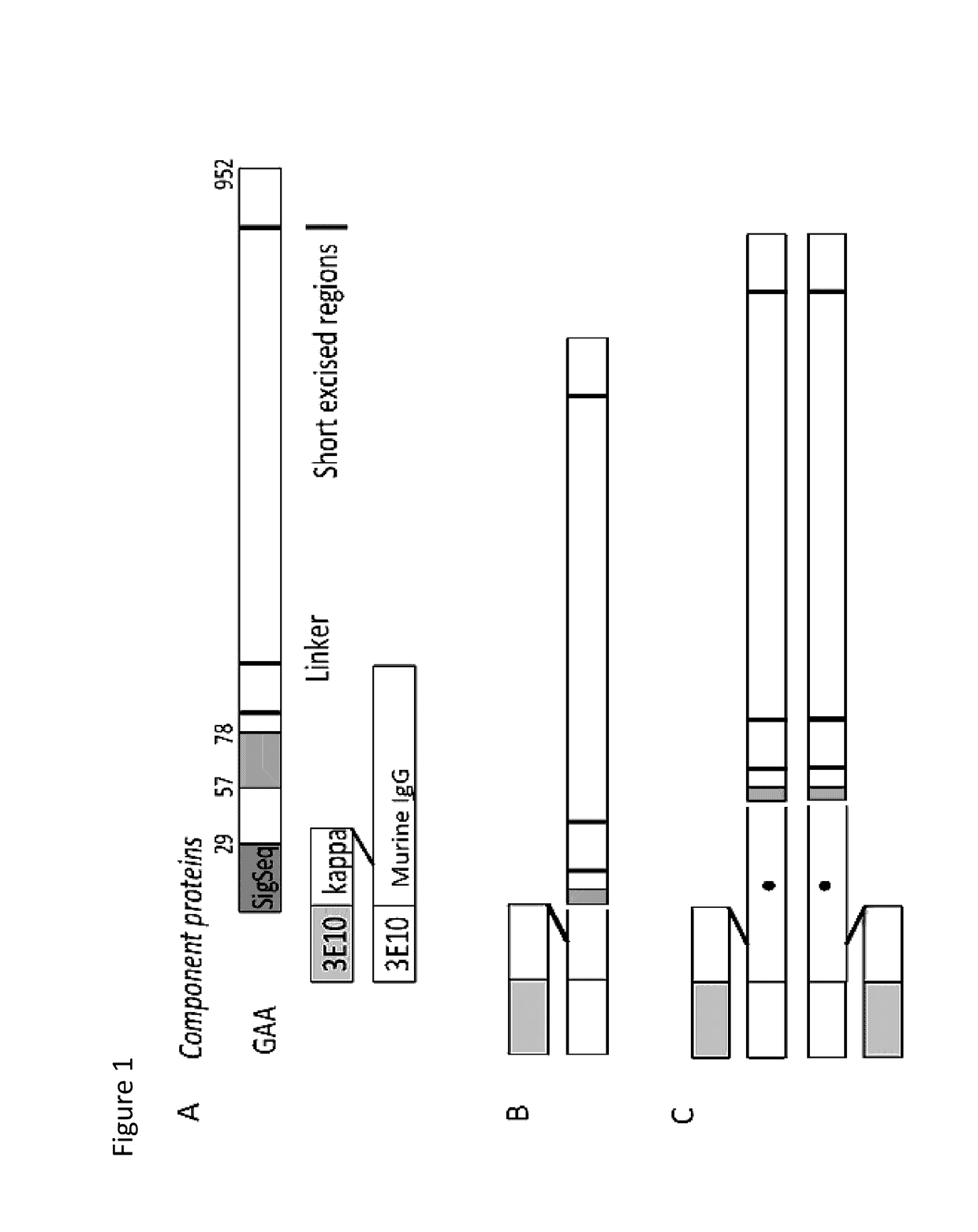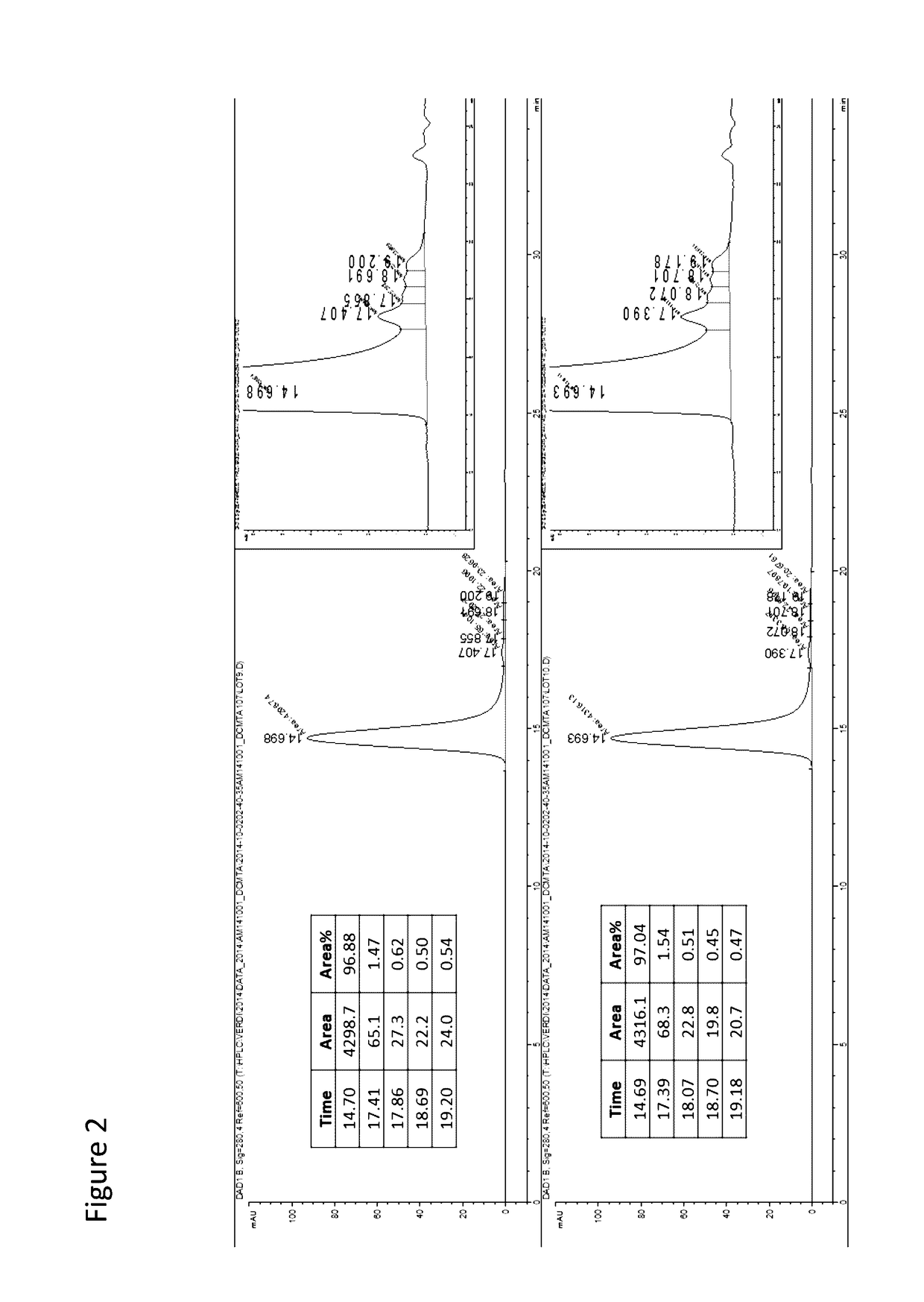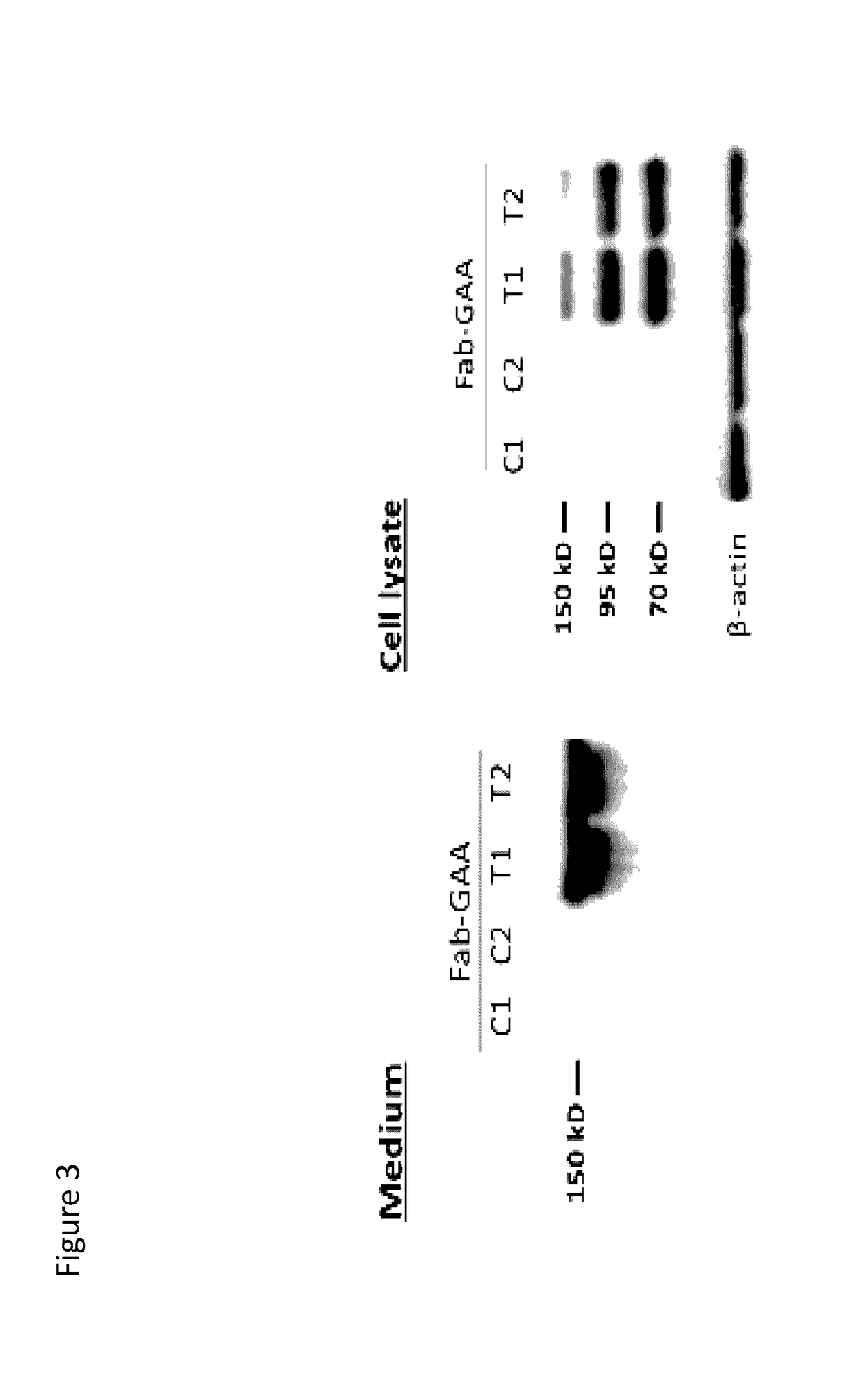Methods and compositions for treatment of glycogen storage diseases and glycogen metabolism disorders
a glycogen metabolism and glycogen storage technology, applied in the direction of drug compositions, peptide/protein ingredients, metabolic disorders, etc., can solve the problems of insoluble form of glycogen, increased risk of osteoporosis in patients, and inability to metabolize glycogen, so as to reduce glycogen accumulation, promote cell cytoplasm transport, and promote cell delivery.
- Summary
- Abstract
- Description
- Claims
- Application Information
AI Technical Summary
Benefits of technology
Problems solved by technology
Method used
Image
Examples
example 1
n of 3E10 mAb-GAA and 3E10 Fab-GAA Fusion Constructs
[0534]Representative chimeric polypeptides were expressed according to the protocol described in Hacker et al., 2013, Protein Expr Purif. 92: 67. Specifically, chimeric polypeptides comprising a GAA polypeptide portion and an internalizing moiety portion were made recombinantly. In this experiment, a GAA polypeptide comprising a GAA polypeptide was fused to either a full-length murine monoclonal 3E10 antibody comprising the light chain variable domain set forth in SEQ ID NO: 10 and the heavy chain variable domain set forth in SEQ ID NO: 9 (the internalizing moiety portion), or to a Fab of this 3E10 antibody (see FIG. 1). Specifically, in this example, a GAA polypeptide having the amino acid sequence of SEQ ID NO: 22 was fused to the C-terminus of either the heavy chain constant region of a murine 3E10 Fab fragment or to the C-terminus of the heavy chain constant region of a full-length murine 3E10 monoclonal antibody (mAb). In this...
example 2
n and Characterization of mu3E10 mAb-GAA and 3E10 Fab-GAA
[0536]Chimeric polypeptides comprising a GAA polypeptide portion and an internalizing moiety were made recombinantly. Here, the internalizing moiety was either a full length antibody or a Fab, comprising a heavy chain variable domain as set forth in SEQ ID NO: 9 and a light chain variable domain as set forth in SEQ ID NO: 10. For both the 3E10 mAb and the 3E10 Fab proteins, a light chain having the amino acid sequence of SEQ ID NO: 35, which includes a signal sequence (SEQ ID NO: 33), was used. However, it is recognized that the signal sequence is cleaved and not present in the final protein product. For both the 3E10 mAb and the 3E10 Fab proteins, a GAA polypeptide having the amino acid sequence of SEQ ID NO: 22 was fused (e.g., the proteins were made as a fusion protein) to the C-terminal portion of either the 3E10 mAb or 3E10 Fab heavy chain by means of a flexible gly-ser linker (SEQ ID NO: 30). The 3E10 mAb heavy chain con...
example 3
Conjugation of 3E10 and Human GAA (mAb3E10* GAA)
Chemical Conjugation
[0553]In this example, ten milligrams (10 mg) of a full-length 3E10 mAB comprising a heavy chain variable domain comprising the amino acid sequence of SEQ ID NO: 9 and a light chain variable domain comprising the amino acid sequence of SEQ ID NO: 10 (e.g., such as an scFv in which the VH and VL domains are interconnected via a linker) are conjugated covalently, directly or indirectly, to a GAA polypeptide (e.g., a GAA polypeptide comprising amino acid residues 67-952 of SEQ ID NO: 1), in a 1 / 1 or 1 / 2 molar ratio with the use of two different heterobifunctional reagents, succinimidyl 3-(2-pyridyldithio) propionate and succinimidyl trans-4-(maleimidylmethyl) cyclo-hexane-1-carboxylate. This reaction modifies the lysine residues of 3E10 into thiols and adds thiolreactive maleimide groups to GAA (Weisbart R H, et al., J Immunol. 2000 Jun. 1; 164(11): 6020-6). After deprotection, each modified protein is reacted to each ...
PUM
| Property | Measurement | Unit |
|---|---|---|
| acid alpha-glucosidase activity | aaaaa | aaaaa |
| stability | aaaaa | aaaaa |
| chemical | aaaaa | aaaaa |
Abstract
Description
Claims
Application Information
 Login to View More
Login to View More - R&D
- Intellectual Property
- Life Sciences
- Materials
- Tech Scout
- Unparalleled Data Quality
- Higher Quality Content
- 60% Fewer Hallucinations
Browse by: Latest US Patents, China's latest patents, Technical Efficacy Thesaurus, Application Domain, Technology Topic, Popular Technical Reports.
© 2025 PatSnap. All rights reserved.Legal|Privacy policy|Modern Slavery Act Transparency Statement|Sitemap|About US| Contact US: help@patsnap.com



